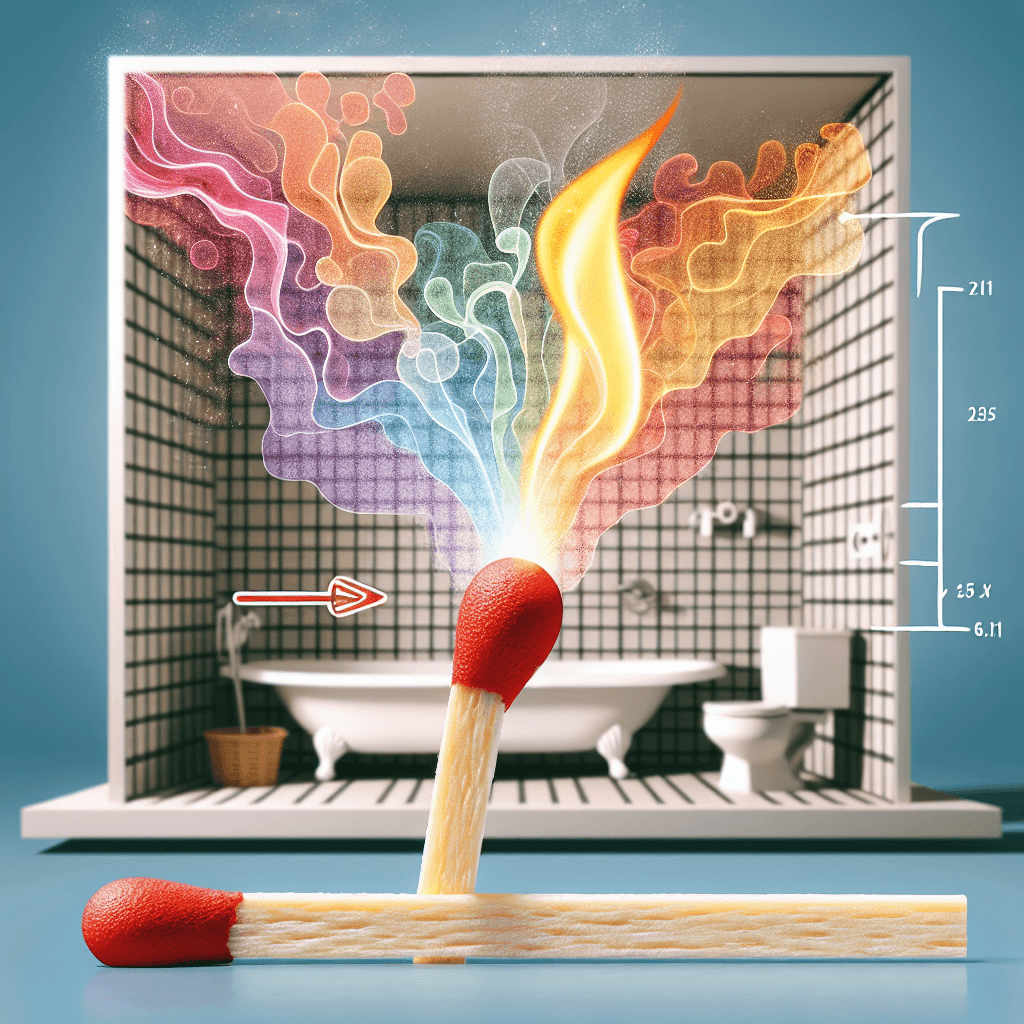Why does lighting a matchstick work so well to mask unpleasant bathroom odors
That tiny matchstick does more than just cover up odors with smoke; it unleashes a chemical compound so potent it literally numbs your nose to the bad smell.


Too Long; Didn't Read
TLDR: A lit match releases sulfur dioxide, a pungent chemical compound whose strong smell easily overpowers and masks the bad bathroom odors. This powerful scent essentially blinds your nose to the less potent smells.
The Surprising Science: Why Does Lighting a Matchstick Work So Well to Mask Unpleasant Bathroom Odors?
We’ve all been there. You’ve just used the restroom in a shared space, only to realize with a jolt of panic that there’s no air freshener in sight. Before you resign yourself to an embarrassing exit, you might recall an old-fashioned trick: lighting a match. For generations, this simple act has been the go-to solution for eliminating unpleasant bathroom smells. But is it just an old wives' tale, or is there real science behind this life hack? The truth is, the effectiveness of a matchstick isn’t magic—it’s a fascinating display of chemistry and human biology. This post will delve into the science that explains why a tiny, flaming stick works so well to combat powerful bathroom odors.
What Are We Actually Smelling?
Before we can understand the solution, we need to understand the problem. The characteristic unpleasant odors in a bathroom are primarily caused by a cocktail of volatile sulfur compounds. When bacteria in our gut break down the food we eat, they produce various gases as byproducts. The most notorious of these include:
- Hydrogen Sulfide (H₂S): Famous for its distinct "rotten egg" smell.
- Methyl Mercaptan: Often described as smelling like rotting cabbage.
- Skatole: A compound that, in low concentrations, can have a floral scent but is highly offensive in larger amounts.
These sulfur-based molecules are potent, and the human nose is incredibly sensitive to them, able to detect them even in minuscule concentrations. When you’re trying to eliminate a smell, you’re essentially waging a war against these specific chemical compounds.
The Power Packed in a Tiny Stick
A standard "strike-anywhere" or safety match head is a marvel of chemical engineering. While formulations vary, the tip typically contains sulfur, an oxidizing agent like potassium chlorate, and other fillers and binders. When you strike a match, the friction generates enough heat to trigger a chemical reaction.
The key ingredient for our purpose is sulfur. As the match head ignites and burns, the sulfur combusts. This rapid oxidation process releases a different sulfur compound into the air: sulfur dioxide (SO₂). This is the gas responsible for the sharp, pungent smell you associate with a freshly lit match—a smell that is distinctly different from woodsmoke. And it is this sulfur dioxide that holds the secret to defeating bathroom odors.
It's Not Just Masking, It's Replacing
So, how does sulfur dioxide work its magic? The process is a brilliant two-pronged attack on both the offending molecules and our own sense of smell.
1. Sensory Overload
The primary reason a lit match is so effective is because of how our olfactory system (our sense of smell) perceives sulfur dioxide. The human nose is exceptionally sensitive to the sharp scent of SO₂. When the gas is released, it floods our olfactory receptors. These receptors are so overwhelmed by the potent signal from the sulfur dioxide that they become temporarily "blind" to the other, less aggressive sulfur compounds like hydrogen sulfide and methyl mercaptan.
Think of it like this: if the bathroom odor is someone talking in a normal voice, the smell of the burning match is someone shouting through a megaphone right next to your ear. You can no longer hear the talking because the shouting completely dominates your sensory input. The match doesn't just cover up the bad smell like a floral spray; it effectively hijacks your nose, replacing the bad smell with its own stronger, cleaner-smelling (by comparison) scent.
2. Chemical Neutralization
While sensory overload does the heavy lifting, some minor chemical neutralization may also occur. The heat and chemical reactions from the flame can break down some of the volatile odor compounds in the immediate vicinity, transforming them into less smelly substances. However, researchers agree that this effect is minimal compared to the powerful sensory-blocking properties of the sulfur dioxide produced. The main event is the sensory takeover.
A Quick Word on Safety
While this is a handy trick, it’s important to practice common sense. Sulfur dioxide is a respiratory irritant in high concentrations, so use this method in a reasonably ventilated area. And, of course, you are dealing with an open flame. Always ensure the match is completely extinguished (running it under water is a great idea) and disposed of properly in a non-flammable container.
Conclusion
The next time you find yourself reaching for a match in a moment of need, you can appreciate the elegant chemistry at play. The age-old trick isn't just about masking a bad smell with a better one; it’s a targeted chemical and biological strategy. By releasing sulfur dioxide, a burning match creates a powerful new scent that effectively overwhelms our olfactory receptors, making them unable to detect the foul-smelling sulfur compounds that caused the problem in the first place. It’s a simple, fast, and incredibly effective solution, proving that sometimes the oldest tricks are rooted in the soundest science.
More Articles

What creates the warm crackle sound unique to vinyl records?
That iconic warm crackle is more than just dust and nostalgia—it's the sound of a microscopic story of friction and physics being told in real-time.

Why do some insects build and wear a backpack made from the corpses of their victims?
For some of nature's tiniest predators, the best defense is a grisly offense—building a protective shield from the corpses of their vanquished prey.

Why are Earth's deserts not random, but aligned in two distinct belts?
It’s not a coincidence that the world's great deserts are aligned in two perfect bands; they are the direct creation of massive, invisible rivers of air that perpetually circle the globe.